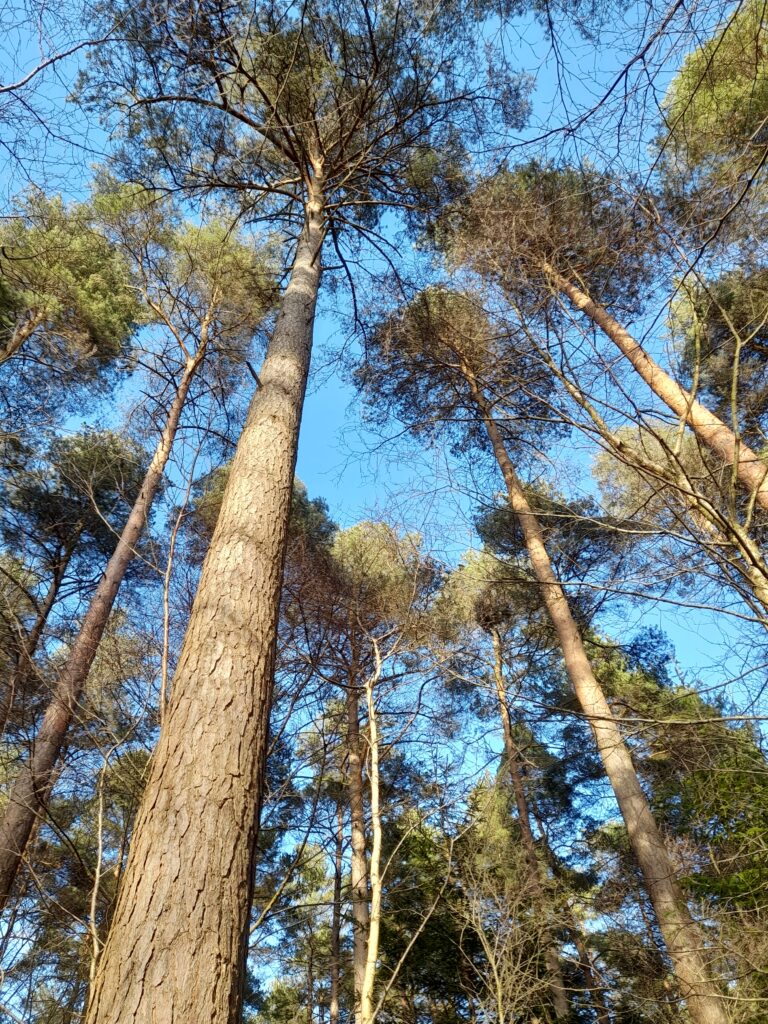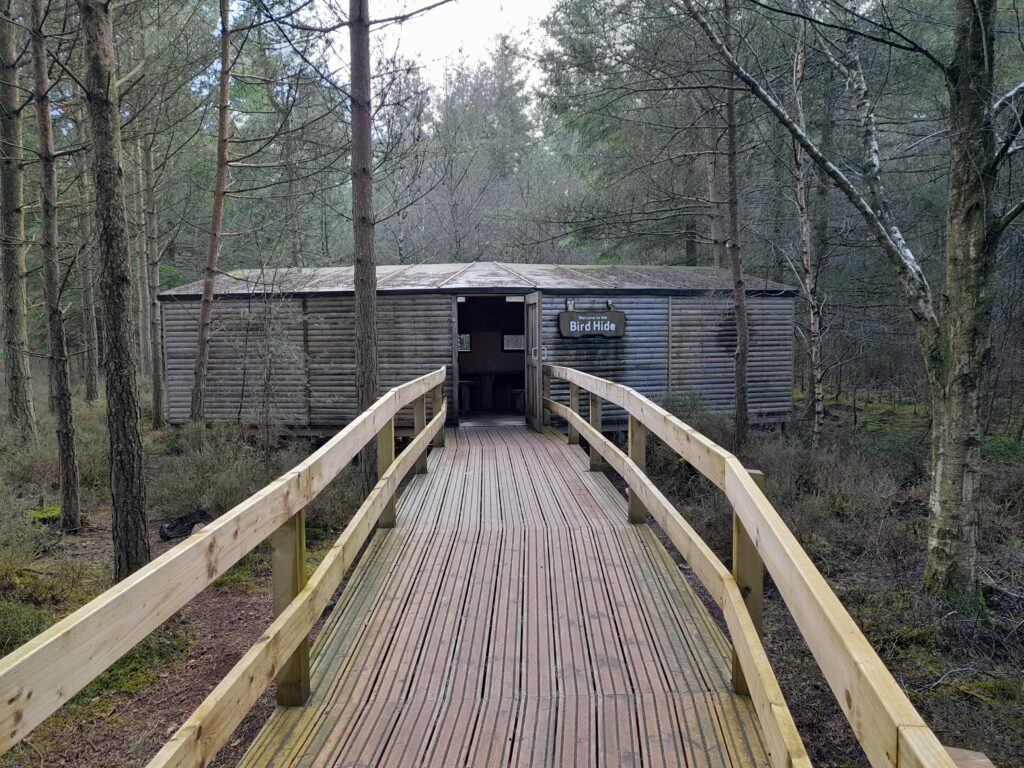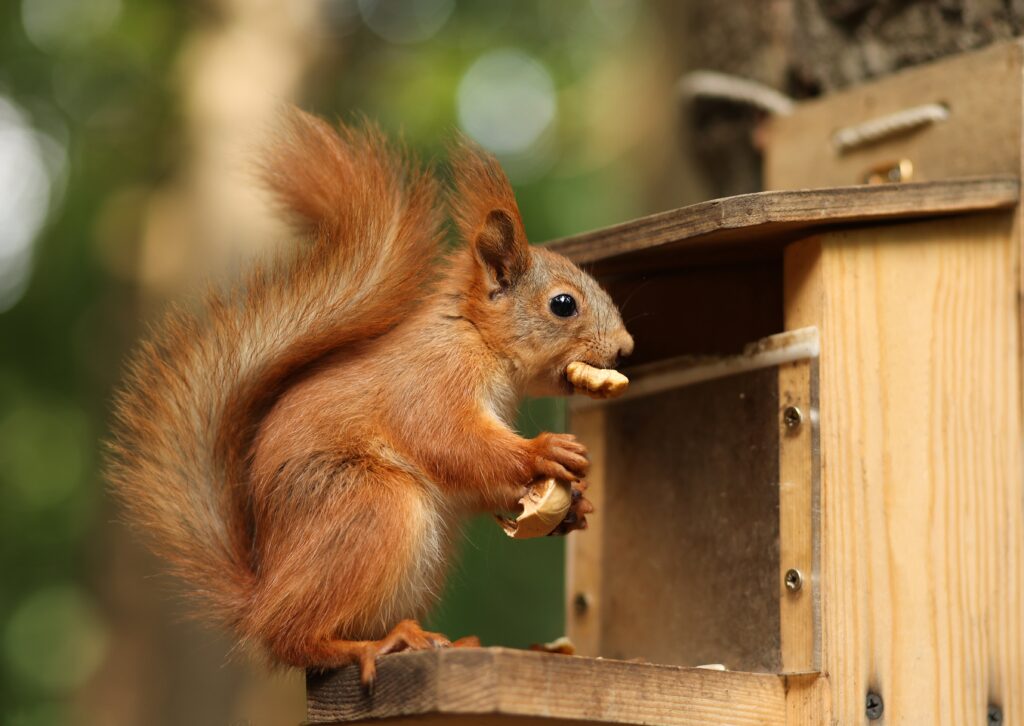On a family holiday, Ed has his first ever sighting of a rare British treasure.
The bird hide overlooks a woodland glade. At first glance the view is pleasant, but unremarkable. Great tits and chaffinch cascade between birch trees and bird feeders that are stuffed with seed. A wood pigeon pads around beneath the feeders, gorging on the fallen seed and briefly a dunnock shares this space. In a flash of movement, the small birds dash for cover momentarily before the hawk appears. I could be sat in a bird hide in any woodland, in any English county.
But then, sometime after the hunter has disappeared, another character timidly appears on the scene. It is an animal that I have never seen before in the wild and it has a distinctive rust-coloured coat. I watch the squirrel quickly scale a pole to reach the feeders before disappearing into the woodland canopy. Using his tail for balance, he leaps between inter-locking boughs. Slipping quietly out of the hide, I watch the squirrel pass above me revealing a pure white chest.
In many respects a busy holiday park on the eastern edge of the Lake District is an unusual place to have my first sighting of one of Britain’s most elusive mammals. Over 800 lodges are built amongst the trees here as well as a swimming pool, restaurants and play areas. Thousands of people cycle and walk through these woods every day. Whilst the glade is screened by trees, every so often I get a glimpse of a delivery lorry on the service road beyond. But it is the very busy nature of these woods that allows such amazing views of the squirrel population. They are animals that have grown used to people and so are very confiding.

Mistaken identity
Most people will be familiar with the story of our native red squirrel and how their population crashed when their grey cousins were introduced to the UK from north America. It may, however, surprise some readers to learn of a string of reports of red squirrels that have reputedly been seen in Shropshire. One of these stories, concerning a possible sighting near Market Drayton in 2011, made the headlines in the Shropshire Star. It is likely that this was a case of mistaken identity. The red squirrel disappeared from our region in the 1970s with the last credible sighting occurring in the quiet woodlands of Hope Valley, between Minsterley and Bishop’s Castle
(www.shropshiremammalgroup.com/shropshire-mammal-atlas-2/red-squirrel/)
Once you have seen a red squirrel, there can be little mistaking them. They are noticeably smaller than greys and have delightful fluffy ear tips. It has been estimated that red squirrels will spend three quarters of their active time in trees and shrubs. Female squirrels will generally have a litter of kits in April and again in August. The success of the breeding season is dependent on a healthy woodland environment, with plenty of food being available. Their diet includes pine cones, which they strip to reveal the pine nuts inside, and acorns.
Today, our woodlands are fragmented and so is our red squirrel population. There are now 17 red squirrel reserves around the UK, where the presence of grey squirrels is not tolerated. As well as out-competing the red squirrels for food, the greys also carry a virus called squirrel pox that kills our native animals. Often the reserves are located on islands, with the sea forming a useful barrier against greys. Our closest population to Shropshire is on Anglesey.

What’s in a name?
You can tell a lot about a place by its name. Around the bird hide I can see heather and the dainty leaves of bilberry growing beneath the trees. Another name for bilberry is whinberry and it is likely that these plants have grown here since the site was open fellside. A bit of research reveals that Whinfell Forest dates back to the 11th century when it was part of a much bigger estate. Sometime in the 1700s, the woodland was indeed cleared to make hill farms. Remains of dry stone walls that once enclosed sheep fields can still be seen around the site.
Today the Whinfell skyline is dominated by Scots Pine trees which create a very different feel to a broadleaf woodland. Even in high summer, light floods through the sparse canopy and each evening the setting sun picks out delicate shades of pink on the bark. This is one of our few native conifer trees and many years ago it would have been an important component of the vast northern forest of Caledonia. At its peak, it is estimated that this forest spanned over 3.5 million acres. Back then a red squirrel could have traversed a woodland canopy that stretched away over the hills and into the horizon.
Do one thing for wildlife this month
The UK Squirrel Accord is a partnership of 45 leading conservation and forestry organisations, Government Agencies and companies that are working towards helping our red squirrel population and reducing tree damage by grey squirrels. One of their areas of research is the roll-out of a fertility control programme targeted at grey squirrels. They would welcome donations through their webpage towards this important work. Please see; www.squirrelaccord.uk/
In each issue, WW! nature expert and Shropshire Council’s Parks and Greenspace Officer Edward Andrews looks at the changing seasons.
You can follow Ed on Twitter: @shropshirewild






